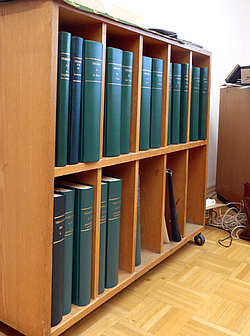Thesaurus linguae Latinae

The “Treasury of the Latin Language” is the first comprehensive dictionary of ancient Latin; it puts our knowledge of Latin antiquity on an entirely new footing.
it is compiled on the basis of all Latin texts surviving from antiquity (until AD 600), both literary and non-literary
for less common words it cites every attestation, for the rest (those marked with an asterisk) an instructive and representative sample
it records all meanings (including technical usages) and all constructions
it documents peculiarities of inflection, spelling, and prosody
it supplies information about the etymology of the Latin words and their survival in the Romance languages, contributed by recognised authorities in the fields of Indo-European and Romance studies
it collects the comments of ancient sources on the word in question
The Thesaurus therefore offers for every Latin word a comprehensive, richly documented picture of its possibilities and history—not only for Latin scholars, but also for scholars of the various branches of ancient studies and for related disciplines.
The Thesaurus is compiled at the Bavarian Academy of Sciences in Munich by an international team of approximately twenty contributors. More than two-thirds of the work has been completed and published.
History
Down to the end of the nineteenth century, the comprehensive historical lexicon of classical Latin was only a dream; its realization began in 1893 with the decision by the five German-speaking academies then in existence to compile the Thesaurus linguae Latinae as a joint project, the moving spirits being Eduard Wölfflin and Theodor Mommsen; in 1894 the practical work began in Göttingen and Munich with the assembling of the material.
This progressed according to plan to the point where, in 1899, the actual work of compiling the articles could begin in Munich, which has been the home of the project ever since; the first fascicle appeared in 1900.
Even in the earliest years, however, it became apparent that—as with all lexica on this scale—both the difficulties and the time needed for completion had been drastically underestimated. Suitable methods of compilation could of necessity only be developed from practical experience and had to satisfy ever rising expectations, especially in the areas of Christian texts and late Latin. As a result, during the fifteen years originally estimated for the whole project, the Thesaurus had got only as far as the first half of the letter D.
Time and again, the political catastrophes of the twentieth century brought the work to a standstill, so that it was necessary to start on a new administrative footing with the founding of the International Thesaurus-Committee in 1949. At present the lexicon is a communal undertaking of 31 academies and learned societies from both within Germany and abroad. By now it is more than two-thirds complete.
See for more information the website of the Thesaurus linguae Latinae.
All printed texts are published by Verlag de Gruyter, Berlin/Boston, which also supplies an online version of the entire Thesaurus.
